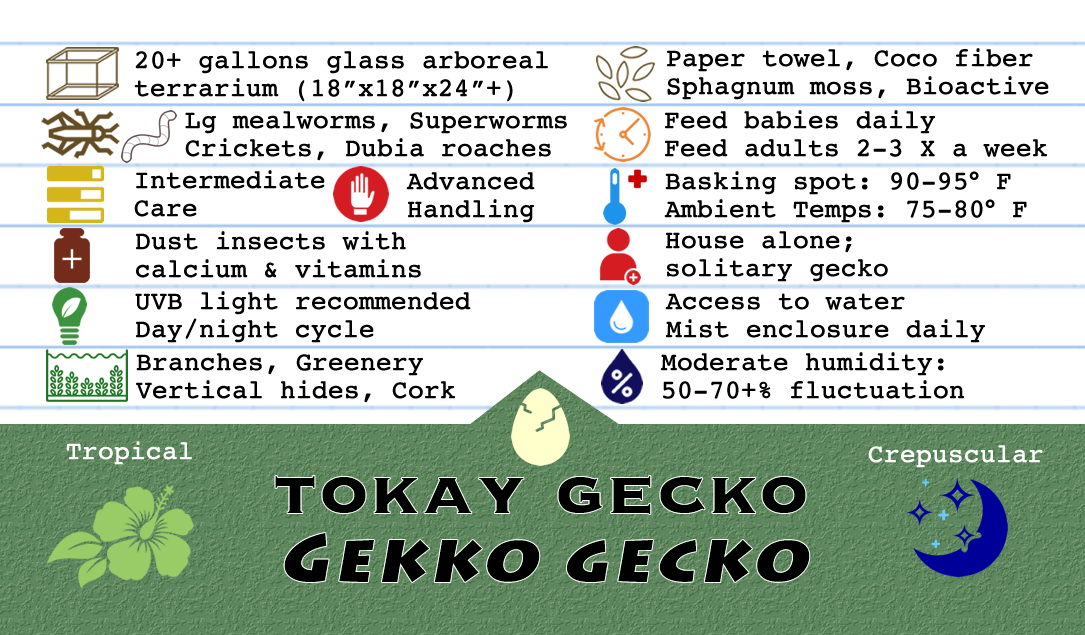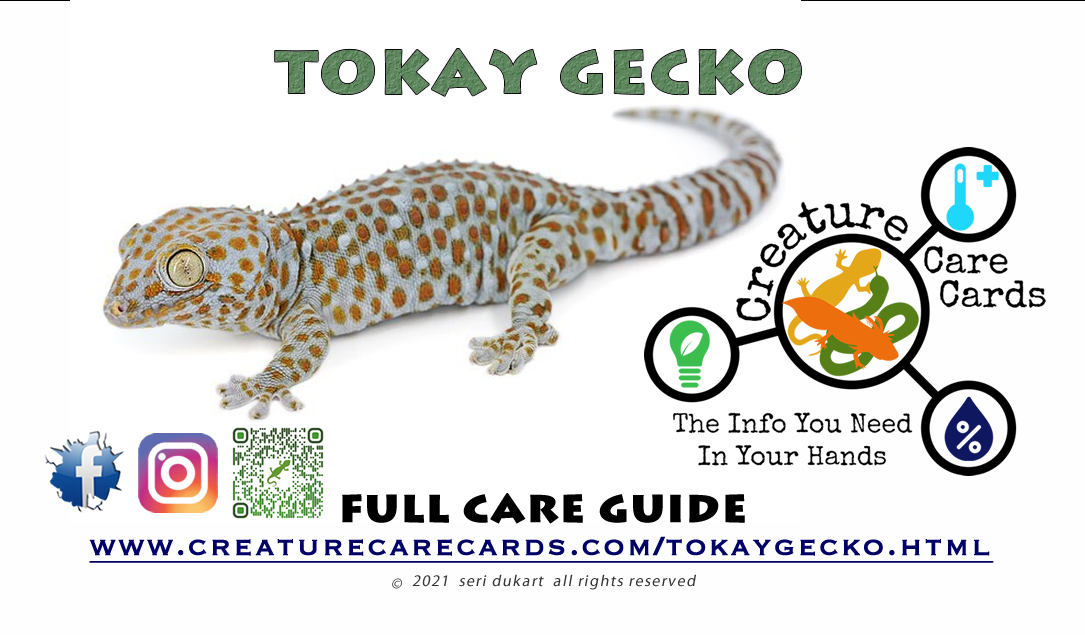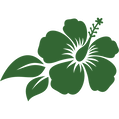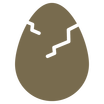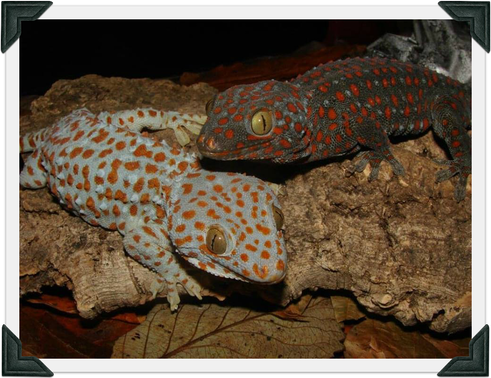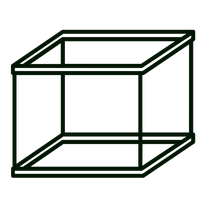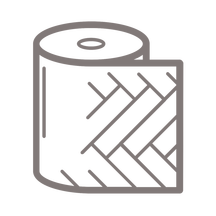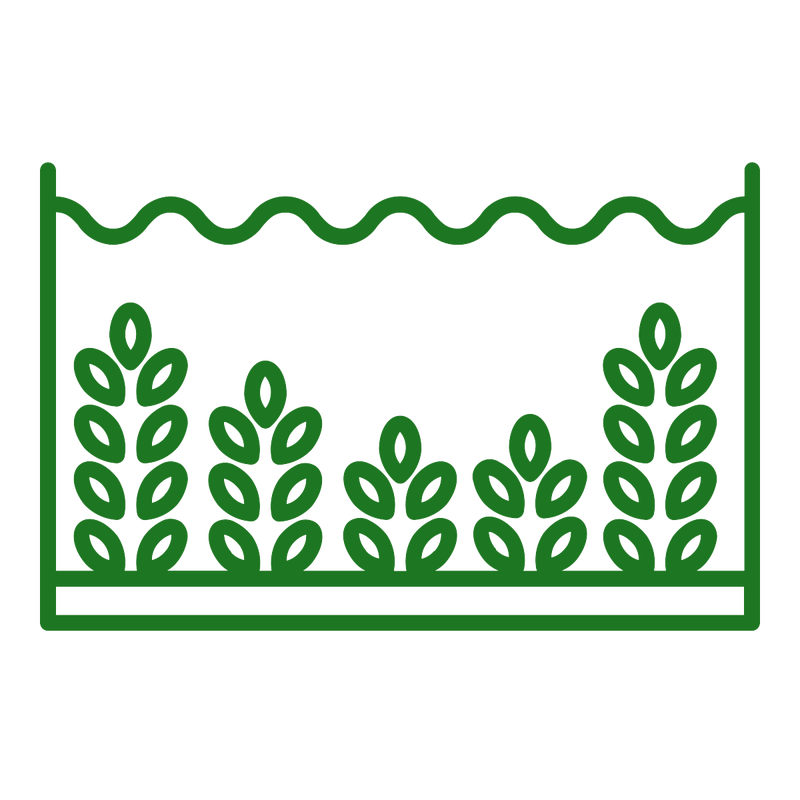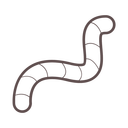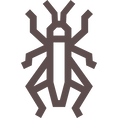Gekko gecko - Tokay Gecko
Tokay geckos are a large gecko known for their aggressive temperament, making them a gecko best kept by those with experience. They are also known to protect their eggs and their young, unlike most gecko species. Tokays can fire up or down according to mood, temperatures or other factors, so may appear to be different shades of their coloration at different times. They are a very intelligent gecko and their loud call can be heard from miles away.
|
Bring Home Your New Pet
When you bring your new gecko home, you should already have a quarantine tank set up and ready to go. Place fresh water in a bowl in the tank, mist the tank and offer food, but be aware it is completely normal for them to refuse food for the first couple days, or even longer. You should keep this new gecko separate from any other geckos you may have for 90 days, to ensure there is nothing it could spread to your other animals. Monitor its eating and fecals as they may be strange for up to a couple weeks, but this is due to a new diet, supplements, and environment. It is recommended you do not handle your new gecko for the first 24-48 hours and keeping it to a minimum until it has started eating on its own. Always keep in mind, your new animal is in a new tank, with new decor/dishes/hides, and new faces watching them. They need time to become acclimated to it all. After this quarantine process, they can be safely introduced to their permanent enclosure if it's not already. Be sure to wash your hands before handling any other geckos during this time. |
|
Enclosure Depending on your need, there are a couple different ways to house a tokay gecko. For a single gecko a glass, front opening terrarium with a screen top would be the most appealing. The general rule of thumb, is to have 20 gallons or more of tank per gecko. Babies and juveniles require less space, but you will need to upgrade as they grow. Some keepers modify plastic tubs with screen to keep their geckos as well. Tokay geckos will use as much space as you can give them. Front opening enclosures are recommended, as they feel threatened by being approached from above. We highly recommend Zen Habitats 2'x2'x2' PVC Enclosure! 
Research bio-active and naturalistic, planted terrariums for more advanced options!
|
|
Compatibility
Tokay geckos are solitary geckos and are not recommended to house together, even females of the same size. Do not house males and females together unless you have researched breeding and are prepared for eggs and babies. Tokays are the only known species of gecko that will protect their eggs and their young. |
|
Temperatures
Tokay geckos come the rainforests of Asia. They are crepuscular, but require a heat source with a basking spot or warm spot of 90-95° F. Ambient temperatures should be between 75-80 F. One way to provide a hot spot is with either an under tank heater mounted on the side of the tank, as tokay geckos are arboreal. Another option is a heat emitter bulb with a rheostat. Heat emitters give off heat but no light, so these nocturnal geckos appreciate the access to the hot spot at their most active times. Some keepers use regular basking bulbs. |
|
Lighting
Tokay geckos are crepuscular, meaning they are active at twilight and throughout the night. They should be exposed to 10-12 hours of light per day. There is debate on whether or not they require UVB light, but they can only benefit from it and it is highly recommended. All lights should be placed on a timer so the gecko has darkness at night, when they are most active. |
|
Cage Decor
Since they are nocturnal and arboreal, they need to have places to hide from the daylight to sleep and climb. You will most often find tokay geckos hanging out in vertical hides or cork rounds, so decorate the tank heavily with fake greenery, branches, cork bark, and vertical hides. Cork tubes are a favorite of tokays, and you will most likely find them hiding in their cork tubes if provided. |
|
Humidity and Shedding
Tokay geckos are a tropical species, so they require higher humidity level of around 50-70% with dry periods. You can best achieve this by misting the enclosure twice a day, once in the morning and once at night. While it is good to offer a shallow bowl of fresh water, most geckos will not drink from bowls and instead prefer to lick water droplets off the enclosure walls and plants. Misting will not only keep the humidity levels up, but offer them hydration as well.You do not want the cage soaking wet, and should allow it to dry out some between mistings. Tokay geckos will shed their skin as they grow and regularly as adults. You’ll notice their color will appear dull when they are about to shed. Generally, the gecko will eat all of their shed, but you may see some of the shed skin in the cage. Some geckos will have unshed skin on their toes, we suggest letting your gecko soak in a shallow container of lukewarm water for a few minutes and you can assist the process by gently removing the skin using tweezers. Stuck shed is often an indication of humidity issues, so you can help this by misting more often or heavier.
|
|
Water
You can offer your tokay fresh water in a shallow bowl, but some will not drink directly from bowls and prefer to lick water from misting off leaves. Water can be treated with a commercial water treatment to remove any harsh chemicals from the water. Mist the enclosure daily to maintain humidity and provide opportunities to hydrate. |
|
Handling
Tokay geckos are considered an advanced gecko when it comes to handling. They have a very intense bite and are not usually open to being handled without being worked with. Never grip a tokay gecko - they see this as a threat and will likely bite. Earning their trust slowly and steadily is the best way to go about taming them. Sit on the floor and let your gecko walk from hand to hand at their own pace. When handling your gecko, never hold or grab them by their tail. They have a natural ability to drop their tail as a defense mechanism. If dropped, the tail will grow back, but it may not look the same as the original. |
|
Shopping List with links to tried and true products
*optional |
